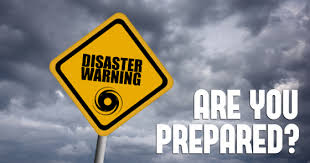When disaster strikes, you want to be ready for it. The best way to do so is to minimize the chances you’ll be hit by a crisis in the first place. But what does that mean, exactly?
A disaster comes in many forms. Maybe a rogue employee decided it would be fun to bring your IT infrastructure crashing down around your ears. Maybe a faulty piece of equipment caused a catastrophic fire. Maybe mother nature just arbitrarily decided that it hates you.
Regardless, the chances that your business will eventually have to deal with a crisis of some nature are much higher than the chances that it won’t. That isn’t a pleasant thought, I know. But it’s a reality we all need to live with.
That’s why effective disaster recovery planning is so important. By anticipating what disasters your organization will face and devising a strategy to keep things up and running during said disasters, you minimize the damage and maximize your organization’s chances of survival. I like to think that’s fairly common knowledge by now, and that most of you who are reading this already have some form of DR plan in place.
That’s good. But it’s not the only thing you’ll need. Believe it or not, business continuity and disaster recovery are technically two very separate entities - even though they frequently wind up lumped under the same umbrella.
A disaster recovery plan covers the why and how of reacting to a crisis. It goes over what needs to happen when your staff springs into motion and starts mitigating an emergency. What it doesn’t cover is what everyone should do in preparation before disaster strikes.
This includes:
- Ensuring redundant systems that you can failover to when critical infrastructure goes down.
- Knowing what resources are most critical to your business, and establishing an order of priority when restoring operations.
- Understanding what potential threats might face each business resource, and how best to mitigate those threats.
- Nominating key individuals who will be responsible for critical tasks such as communication and crisis management.
- Establishes a communication plan for both employees and shareholders before, during, and after an emergency.
- Examines steps that can be taken to minimize the risk of a disaster occurring.
There’s a great deal of overlap between disaster recovery and business continuity - at the end of the day, they really are two sides of the same coin. If you really want to keep your business up and running through even the worst emergency, you need a process that’s both proactive and reactive. You need to know how you’ll respond and recover from a crisis, but also how you’ll reduce the cost of that recovery.
You can’t completely eliminate the chances that you’ll suffer through a disaster. Inclement weather is always going to exist. Malicious employees will always be a threat. Hardware failure will always happen.
What you can do is understand, acknowledge, and mitigate the dangers your business faces - and in so doing make it more enduring and resilient.
Author
Tim Mullahy is the Executive Vice President and Managing Director at Liberty Center One, a new breed of data center located in Royal Oak, MI. Tim has a demonstrated history of working in the information technology and services industry.

